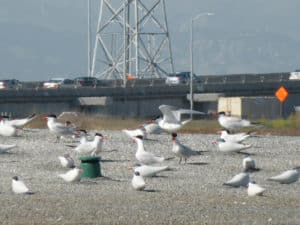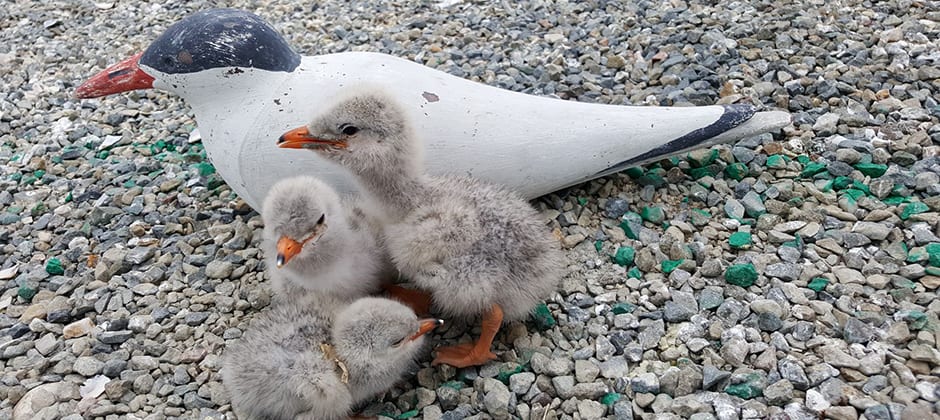Share this article
Speakers and decoys quickly attract Caspian tern colonies
Decoys and a good set of speakers are the perfect tools for attracting Caspian terns to new nesting grounds — and perhaps away from imperiled salmonids they feed on.
“It’s really exceeding our expectations. We had colonies form in the first year of the study,” said Alex Hartman, a wildlife biologist at the U.S. Geological Survey and the lead author of a study published recently in Global Ecology and Conservation.
Caspian terns (Hydroprogne caspia) migrate up and down the Pacific Coast every year. They nest in colonies on gravelly small islands offshore in estuaries.
“They make a little depression in the rocks and put their eggs in it — that’s essentially their nests,” Hartman said.
Some of these colonies are found in the Columbia River estuary, where the birds eat endangered or threatened salmon species like coho (Oncorhynchus kisutch), sockeye (Oncorhynchus nerka), chum (Oncorhynchus keta) and Snake River steelhead (Oncorhynchus mykiss irideus). This has placed the terns in the crosshairs of conservationists, who have tried to deter the birds by covering the islands in colorful streamers.

Wildlife managers attracted Caspian terns using decoys and speakers, like the green cylinder pictured here, playing breeding sounds. ©Crystal Shore, USGS
At the same time, wildlife managers created tern nesting islands in the Don Edwards San Francisco Bay National Wildlife Refuge south of San Francisco Bay using former salt evaporation ponds. From 2015 to 2017, they began using bird decoys and speakers powered by solar panels that played back the calls of a robust Caspian tern colony throughout the breeding season at two of these islands.
“Once we put out the systems and the decoys, we had Caspians on the island within two weeks. So they came in really quickly,” Hartman said. “Caspian terns in particular are a pretty receptive species to these techniques.”
In the first season, they recorded 224 breeding pairs, and numbers grew every year after that. The second year saw over 300 breeding pairs on the two islands, and in 2017 there were 501 pairs.
“We had this nice progression,” Hartman said. While the study ended in 2017, subsequent reports showed that both colonies were still there in large numbers in 2018 and 2019, he said. “It looks like these colonies were enduring even after we stopped the social attraction,” Hartman said.
Most of the banded birds they survey on these new islands came from the San Francisco Bay area, but they observed three of the banded birds had come from the Columbia River estuary. Others came from Oregon or elsewhere in California.
Header Image: Caspian tern chicks appear around a decoy on an island colony in San Francisco Bay. ©Crystal Shore, USGS








